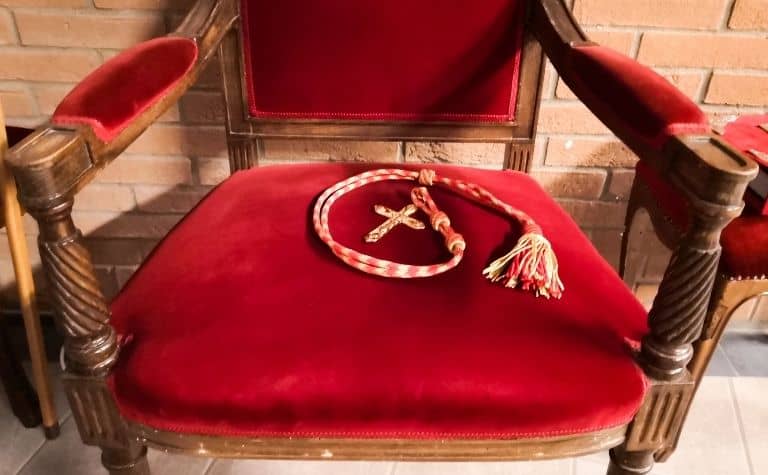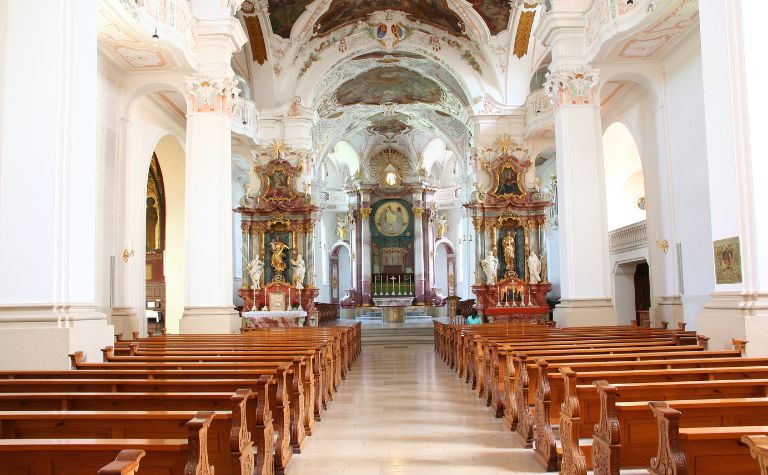Leadership hierarchies within the organization of the Catholic Church provide a stabilizing influence for members. Throughout its history, Catholicism has established a variety of titles and roles within the church, like a cardinal. Some may wonder: how does a person become a Catholic cardinal?
The pope is the only person with the authority to appoint a cardinal. However, the pope may only select ordained priests to the position, and the majority of cardinals are bishops or archbishops before they are appointed.
What is the origin of the title cardinal, and how many cardinals are there in the Catholic Church? Is becoming a cardinal a necessary prerequisite for becoming a pope? Continue reading to explore these questions and others.
Also, see Can You Attend a Catholic Church Without Being a Catholic? to learn more.

Why Are Cardinals Called Cardinals?
The word “cardinal” originates from the Latin word “cardo,” which means “hinge.” This definition describes the various roles and responsibilities of a Catholic cardinal.
One of the roles of a cardinal is his association with a ceremonial church, which is located in Rome or the immediate surrounding areas.
A cardinal does not possess any governing powers in his ceremonial church but may hear confession there and lead the celebration of mass.
The Catholic Church has not strictly defined the role of a cardinal within its ceremonial church, but many serve alongside the priest and some give counsel when necessary. Others also support their ceremonial church monetarily.
The meaning of “hinge” from the Latin word “cardo” is relevant to the idea of a ceremonial church because it refers, through the use of synecdoche, to the physical address of that particular church.
Synecdoche is a figure of speech where a part refers to the whole of something larger. In this case, multiple synecdoches occur: “hinge” refers to “door,” which is shorthand for the entire church building.
The word “cardo” (“hinge”) can also signify something pivotal or integral to a larger idea. More specifically, a hinge allows a door to function properly without drawing attention to itself.
This also refers to another important role in the life of a cardinal, that of advising the pope. The pope governs the church, but this does not mean that he does not seek the counsel of others before he makes a decision.
Cardinals, who are often exceptional leaders in their own right and frequently occupy the position of bishop in the most important cities worldwide, provide the pope with godly, theological, and practical counsel.
Catholics believe that cardinals are one of the ways that God is able to work through the ministry of the pope and one of the metaphorical “hinges” upon which the Church doors swing. [1]
Also, see Catholicism and Cremation: What Are the Rules? to learn more.

Do Catholic Cardinals Get Paid?
Catholic cardinals earn a salary that is estimated to be in the range of $70,000 per year. However, this does not include other financial benefits such as paying reduced or free rent and reimbursement for transportation.
Their salary also largely depends on where the cardinal lives and which diocese he is in charge of. The exact amount of the salary is not standardized.
In general, given that many cardinals also must perform the duties of a Bishop in addition to serving in an advisory role to the pope, most Catholic leaders don’t believe the amount is excessive.
Many lay people who work in Catholic administration make larger salaries in comparison to cardinals and especially in comparison to lower clergy members such as priests.
Parish priests conventionally make $25,000-$30,000 per year, although this does not take into account the free rent of living in the rectory. The pope does not receive a salary.
How Many Catholic Cardinals Are There?
Currently, there are 222 cardinals in the Catholic Church. 124 of these are eligible to vote and 98 are not — a cardinal must be younger than 80 to be an elector.
The Catholic church teaches that the original cardinals in Rome were the seven deacons of the seven regions of the city. Like current cardinals, these leaders had the closest access to the pope.
Although the exact nature and role of being a cardinal have changed throughout the centuries, cardinals have always had special privileges and duties. [3]
In the 16th century, Pope Sixtus V set the total number of cardinals to seventy and specified that six of them had to be bishops, fourteen deacons, and fifty deacons.
Each successive pope followed this cap of seventy cardinals until the 20th century when Pope John XXIII exceeded the limit.
Pope Paul VI further increased the number of cardinals when he decreed that the Patriarchs of the Eastern Catholic Churches would also attain the title of privileges of being a cardinal.
Currently, there is a rule that the number of electors present at a papal conclave cannot exceed 120. However, some Catholic scholars believe that nothing would actually happen if this number ever exceeded 120.
Also, see Can Anyone Go Into a Catholic Church to Pray? to learn more.

Do Popes First Have To Be Cardinals?
Technically, the only requirement for becoming a pope is to be male and a baptized Catholic in good standing. Practically speaking, the vast majority of popes have served in high positions in the Catholic Church, oftentimes as cardinals.
Like election to positions of authority within the secular world, many factors contribute to who ends up as the eventual leader.
Experience as a bishop or a cardinal has obvious parallels to the leading of the entire Catholic Church. There are also many political, bureaucratic factors that threaten to influence the election process.
Perhaps because of this, canon law has dictated a strict and thorough process for choosing the next pope.
When a pope dies or resigns, all of the cardinals who are eligible to vote meet together in what is called a papal conclave.
All of the discussion and the entire voting process is kept entirely secret within the walls of the Vatican.
Every day there are four elections: two in the morning and two in the afternoon. A two-thirds majority is required to elect the next pope.
Twice a day, Catholic officials burn the papers, emitting a plume of smoke that is visible to the public.
If the smoke is black then the Cardinals have not reached the two-thirds vote. If the smoke is white, then they have chosen the next pope.
References:
[1] Source
[2] Source
[3] Source
Related Questions
Catholic vs. Protestant vs. Orthodox: What's the Difference?
Roman Catholicism, Protestant Christianity, and the Eastern Orthodox Church are the three historical branches of the Christian religion. Each tradition traces its doctrines and practices to the New...
Roman Catholicism vs. Eastern Orthodoxy: What's the Difference?
The Roman Catholic Church and the Eastern Orthodox Church, along with Protestantism, comprise the three historical branches of the Christian religion. The Catholic and Orthodox branches separated...
